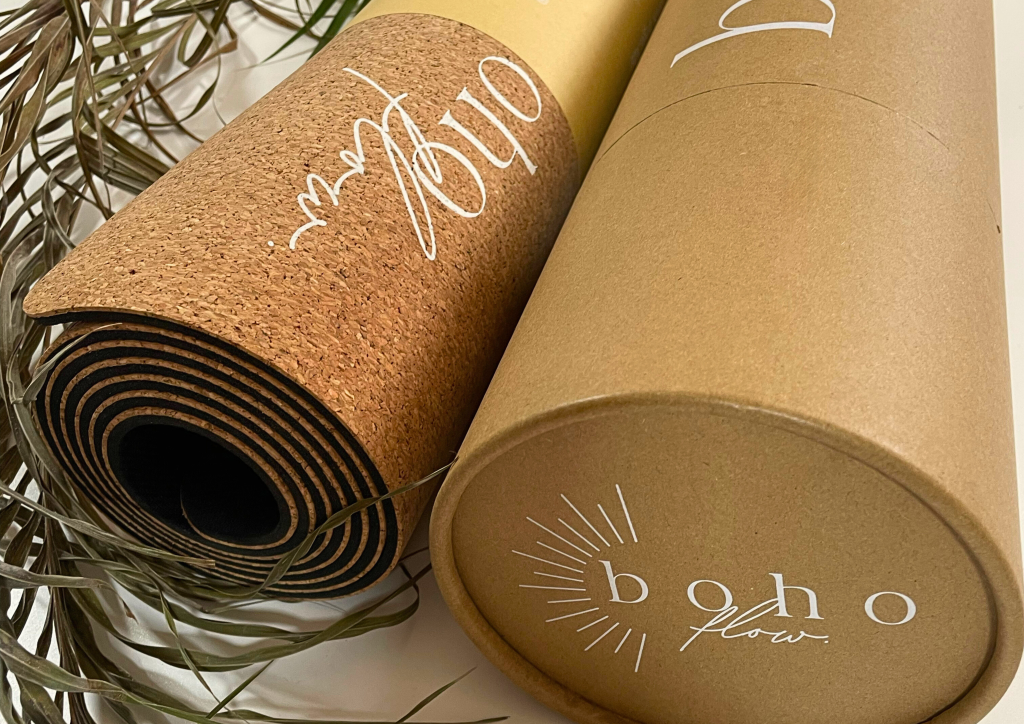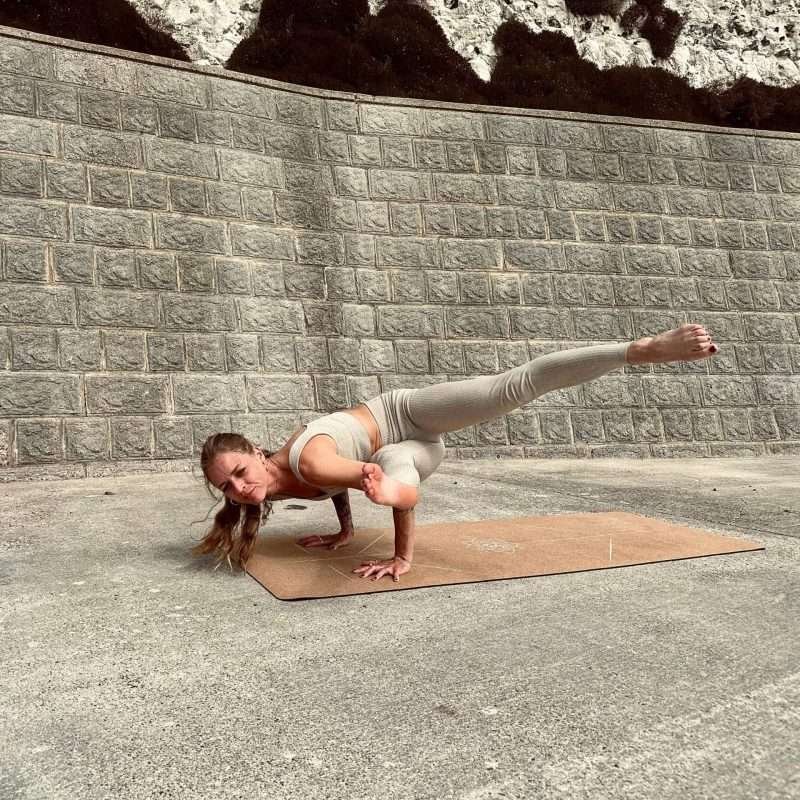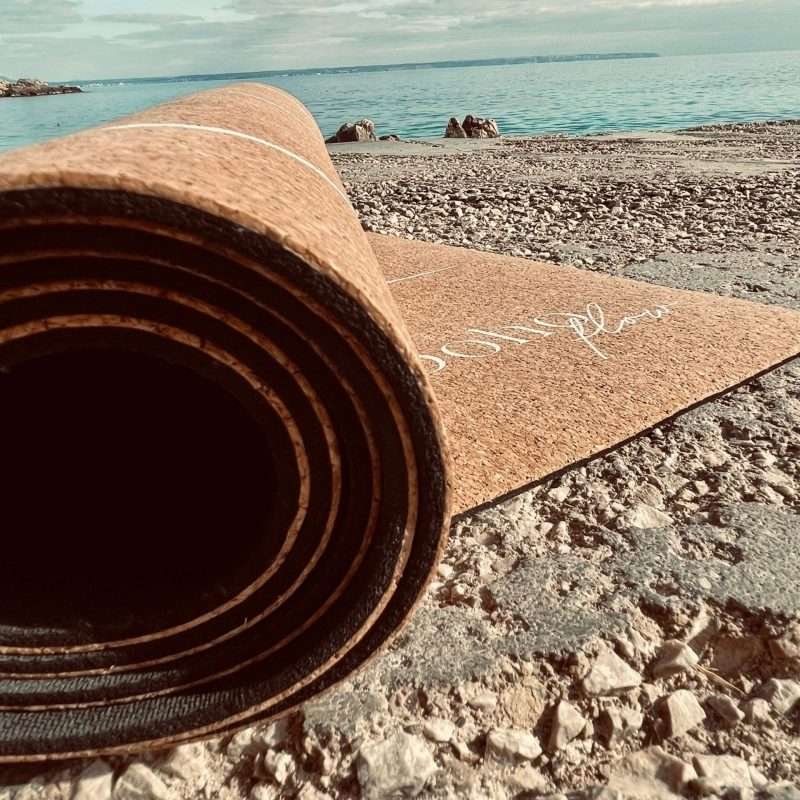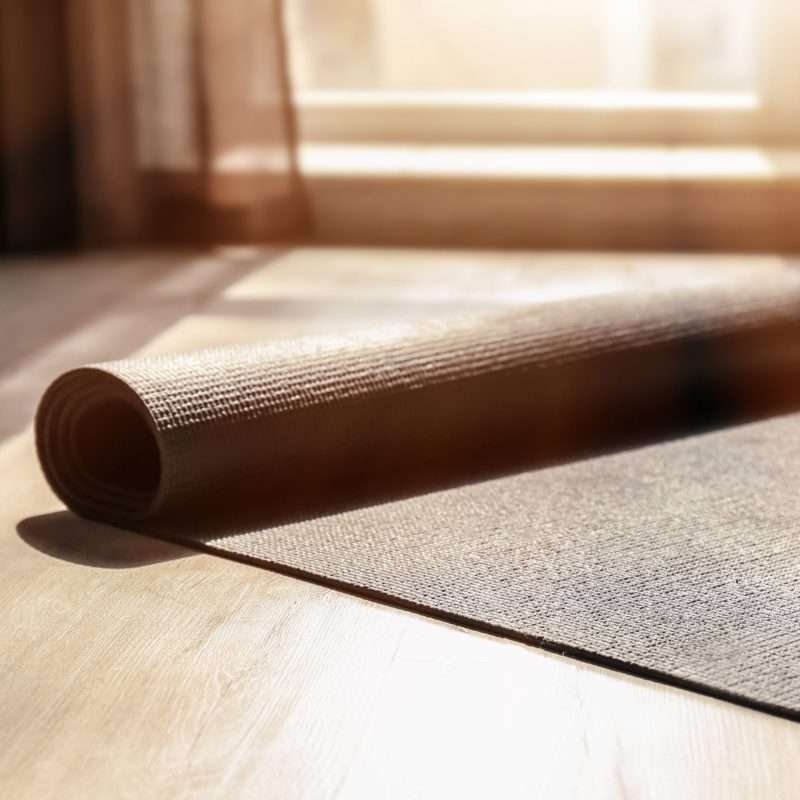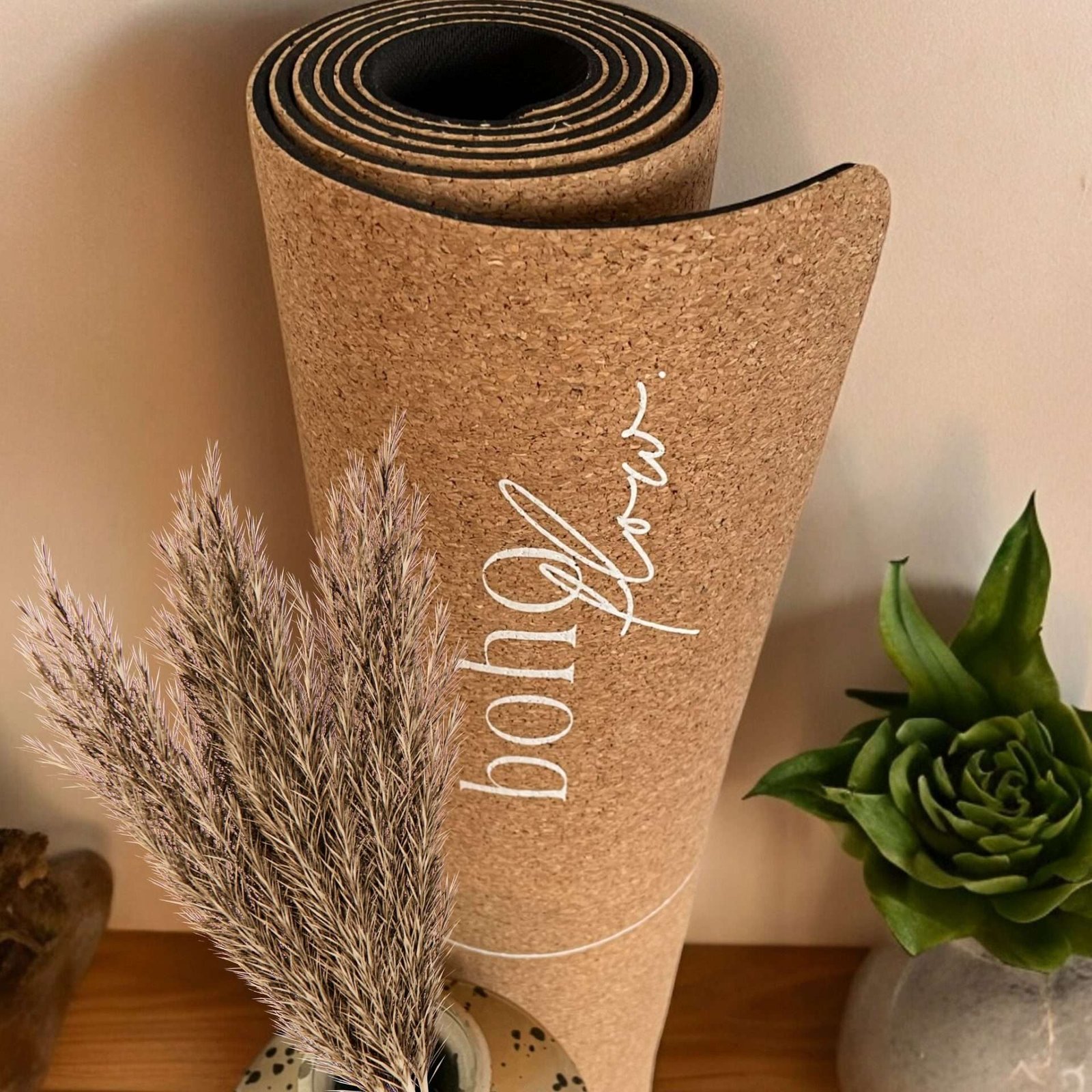How is Cork Harvested: The Eco-Friendly Journey of Cork from Tree to Yoga Mat
So, by now you may have heard that cork is an eco-friendly and sustainable material, but just how is cork harvested? And how does cork harvesting and production compare to other materials? Today, we want to share with you some deeper insights into the fascinating story of how cork is harvested and why it makes an exceptional choice for yoga mats and other eco-friendly products.
At Boho Flow, eco meets elegance. We aim to make you an eco-conscious trendsetter by providing you with yoga products and accessories that are eco-friendly, elegant, and offer superior performance. Cork is one of the main materials used in Boho Flow products. In the world of eco-conscious living, cork stands out as a remarkable material that embodies sustainability and environmental friendliness. Let’s find out why!

The Cork Harvesting Process: A Sustainable Practice
Cork is harvested from the cork oak tree (Quercus suber), which primarily grows in the Mediterranean region. Countries like Portugal and Spain are well-known suppliers for the raw cork material. The process of harvesting cork is unique and sustainable, involving careful techniques that ensure the tree’s health and longevity. Here’s how it works:
1. Tree Maturity:
Cork oak trees must reach an age of 25 years before their bark can be harvested for the first time. This initial harvest is called “virgin cork,” and it’s typically of lower quality compared to subsequent harvests. Produce from the first and second harvest are sometimes used for insulation purposes. The later harvest produce what is referred to as “female” cork, which has more uses.
2. Stripping the Bark:
Skilled workers use specialized hand tools to strip the outer bark of the cork oak tree. This process is known as “decortication.” Importantly, only the outer layer of bark is removed, leaving the tree unharmed. The inner bark, or cambium layer, remains intact, allowing the tree to regenerate new bark.
3. Harvested by Hand:
The cork bark is stripped from the tree by hand, using minimum tools and machinery, which also contributes to an eco-friendly harvesting method and a low CO2 output. It is a careful and skilled hand labor harvest.
4. Regeneration:
After the bark is harvested, the cork oak tree enters a period of regeneration. It takes approximately 9 to 12 years for the bark to regrow sufficiently for the next harvest. During its lifetime, a single cork oak tree can be harvested up to 17 times, making it a renewable resource. In the meantime, the cork trees need to be taken good care of.
5. No Tree Felling:
One of the most significant aspects of cork harvesting is that it does not involve cutting down trees. This practice not only preserves the trees but also supports the biodiversity of the cork oak forests, which are home to various plant and animal species.
Due to these points, cork is harvest is a careful, eco-friendly and sustainable process that requires great skill and care. As a result, it produces high-end, renewable materials, which will be reflected in the price of products that use these raw materials.
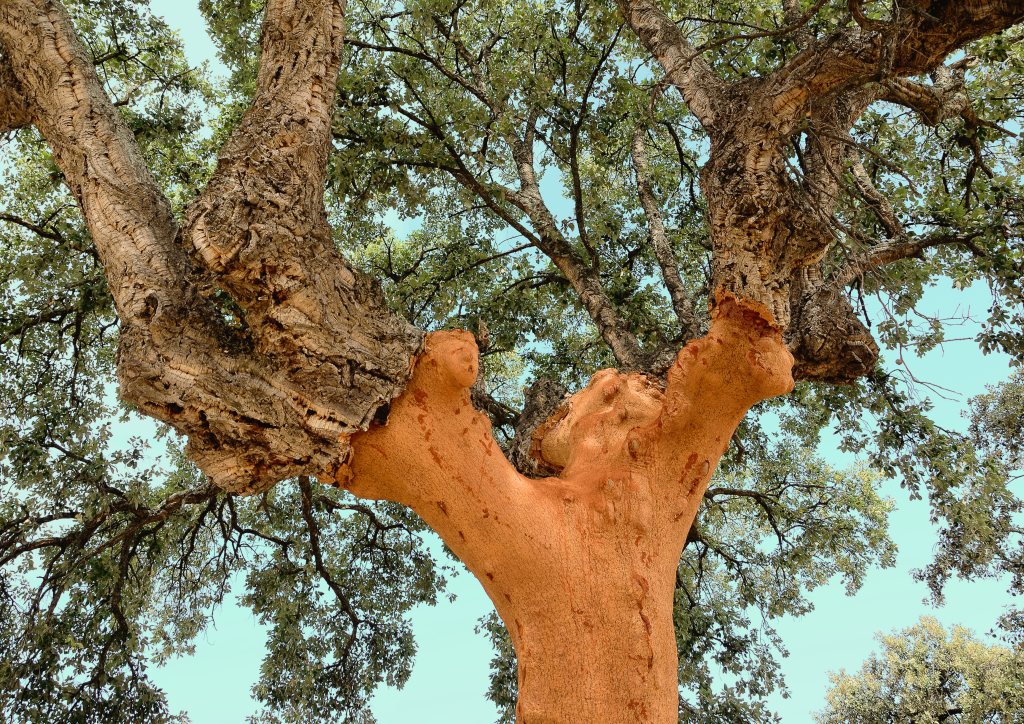
Turning Waste into Value: Manufacturing Cork Yoga Mats
One of the most remarkable aspects of cork’s eco-friendliness is how even the smallest particles of cork, which might otherwise be discarded, are utilized. During the processing of cork, waste particles and granules are collected and repurposed. These particles are carefully bound together using non-toxic adhesives to create the durable, non-slip surfaces of cork yoga mats. This manufacturing process not only reduces waste but also ensures that every part of the harvested cork is used efficiently, embodying the principles of a circular economy. By transforming these particles into high-quality yoga mats, we contribute to a more sustainable and waste-free production cycle.
Cork vs. Other Materials: A Comparative Perspective
As discussed, cork and its harvest are very eco-friendly. However, we wanted to demonstrate just how much cork stands out in terms of sustainability compared to the manufacutring of other materials. Take a look below:
Renewability:
Unlike synthetic materials that rely on non-renewable resources, cork is entirely renewable. The cyclical harvesting process ensures a continuous supply without depleting natural resources.
Carbon Sequestration:
Cork oak trees play a vital role in carbon sequestration. During their lifespan, these trees absorb a significant amount of CO2, helping to mitigate climate change. It’s estimated that cork oak forests can absorb up to 14 million tons of CO2 each year. Did you know that a single harvested cork tree can absorb up to 5x more CO2 than a non-harvested cork tree? So, harvesting cork actually contributes to a low carbon footprint in multiple ways.
Biodegradability:
Cork is a natural material that is fully biodegradable and recyclable. At the end of its life cycle, a cork product will decompose without leaving harmful residues, unlike plastic or synthetic alternatives. It can also be recycled and will not fill up landfills like synthetic or plastic alternatives will. Note: All Boho Flow products are plastic free – including the packaging. We take great care of not using any unnecessary plastics in our products!
Durability and Comfort:
Cork yoga mats provide excellent durability and a comfortable grip, making them ideal for yoga practices. The natural elasticity and shock absorption of cork enhance the overall yoga experience, offering both comfort and support. The combination of cork and natural tree rubber not only makes our Boho Flow yoga mats 100% eco-friendly, it also means that they will last you for many, many years.
Eco-Friendly Production:
The production of cork products involves minimal waste and energy consumption. The bark can be processed with low-impact techniques, and any waste produced can often be repurposed. To show you what we mean, here are some examples:
- In terms of the emission of greenhouse gases to produce wine stoppers, for exmaple, plastic stoppers release 10x more and aluminium screw tops 26x more CO2 than cork stoppers.
- In numbers: The production of 1,000 cork stoppers emits approximately 1.5kg of CO2. while 1,000 plastic stoppers emit 14kg of CO2 and aluminium screw caps as much as 37kg of CO2!
Now, that is really something, isn’t it? Are you ready to make the switch? Shop our premium Portuguese cork and natural rubber mat here.
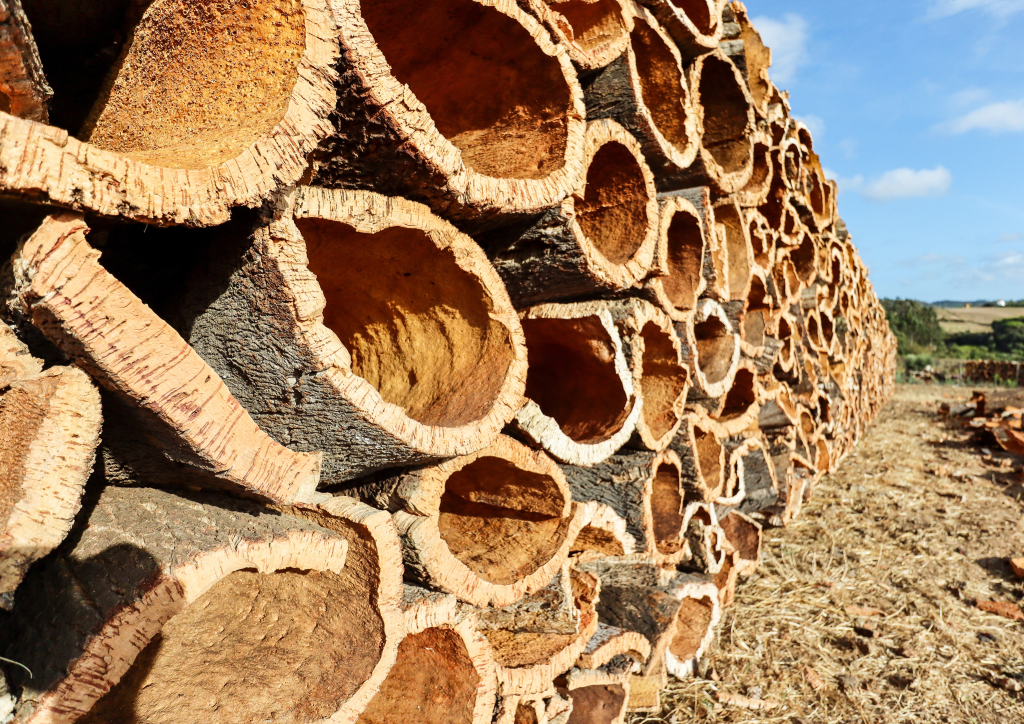
Embracing Cork in our Boho Flow Eco Yoga Products
At Boho Flow, we are proud to offer you cork yoga mats and other eco-friendly products that align with our commitment to sustainability. By choosing cork, you are not only investing in a high-quality product but also supporting an environmentally friendly industry. Cork yoga mats provide a non-toxic, comfortable, and durable surface for your practice, while also contributing to the preservation of cork oak forests and the biodiversity they support – a good choice for your health, your practice and the planet!
Final Thoughts
The journey of cork from tree to yoga mat is a testament to nature’s ingenuity and resilience. By choosing cork products, we embrace a material that is not only functional and beautiful but also a symbol of our dedication to preserving the environment. Join us in celebrating the eco-friendly benefits of cork and make a mindful choice for your yoga practice and the planet.
